Disclosure: This article contains affiliate links. We may earn a commission from purchases at no extra cost to you, which helps our travel content.
Standing in the cobblestone streets of Vigan as the morning mist lifted, I felt an uncanny sense of déjà vu. The Spanish colonial architecture transported me back to childhood summers in Barcelona, yet the aromas wafting from nearby kitchens told a different story—one of culinary collision between my Spanish heritage and the Filipino influences that have evolved here for centuries. This UNESCO World Heritage city isn't just a living museum; it's a gastronomic time capsule where weather patterns, colonial history, and indigenous ingredients have created something truly unique: a Spanish-Filipino fusion cuisine that tells the story of conquest, adaptation, and culinary genius.
Calle Crisologo: Where Spanish Colonial Meets Filipino Flavor
The heart of Vigan's culinary experience begins on Calle Crisologo, where centuries-old stone houses with capiz shell windows frame a street that could easily be mistaken for a Spanish colonial outpost—until you notice the food carts selling empanadas with distinctly Filipino fillings.
As a Spanish-American who grew up helping my abuela prepare traditional dishes, I found myself both delighted and intrigued by these familiar-yet-different interpretations. The Vigan empanada—with its distinctive orange-hued rice flour shell encasing a filling of local longganisa sausage, egg, and green papaya—demonstrates perfectly how Spanish culinary techniques adapted to local ingredients and climate conditions.
What makes these empanadas especially remarkable is how they reflect the region's weather patterns. The rice flour shell, more resilient in the humid Philippine climate than wheat flour, creates a crunchier texture than its Spanish counterpart. I watched, mesmerized, as vendors worked with practiced efficiency, their hands moving rhythmically as they flattened dough, added filling, and deep-fried these golden pockets to crispy perfection.
"Señora, pruébalo con vinagre!" an elderly vendor encouraged as I examined my first Vigan empanada. Following her advice to try it with the local spiced vinegar dipping sauce was a revelation—the acidic tang cutting through the richness perfectly.
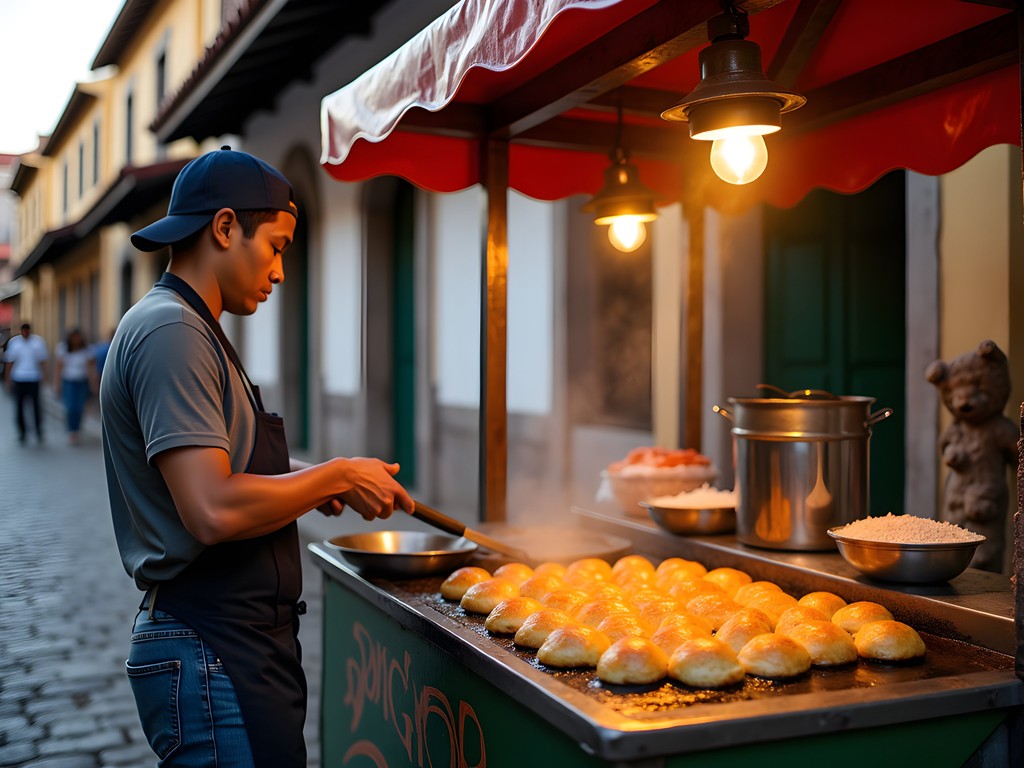
💡 Pro Tips
- Visit empanada vendors around 4-5pm when they're freshly made for afternoon merienda (snack time)
- Ask for 'double egg' (doble yema) if you prefer a richer filling
- Pair with local sugarcane vinegar for the authentic experience
Bagnet & Longganisa: The Twin Stars of Ilocano Cuisine
If there's a weather-food connection I've observed across my travels, it's that regions with distinct wet and dry seasons often develop preservation techniques that become culinary treasures. Vigan exemplifies this perfectly with two signature dishes: bagnet and longganisa.
Bagnet—deep-fried pork belly with skin so crispy it shatters like glass—might remind Spanish food enthusiasts of chicharrón, but the multi-stage cooking process creates something entirely unique. The pork is boiled, air-dried, and then deep-fried to perfection. During my visit, I joined a cooking class at a local home where our host demonstrated how the region's humidity affects drying times. For home cooks wanting to recreate this, I found this digital food thermometer invaluable for achieving the perfect oil temperature (180°C/350°F) for that signature crunch.
Vigan longganisa, meanwhile, is a garlicky pork sausage that's smaller and more intensely flavored than its Spanish chorizo ancestor. The higher acidity helps preservation in tropical weather, creating that distinctive tangy profile. Each morning, I'd seek out longsilog—longganisa served with garlic rice and fried egg—watching as monsoon showers passed through, knowing the garlic-vinegar punch would taste even better against the backdrop of petrichor.
What struck me most was how families gather around these foods. Unlike the formal Spanish sobremesa I grew up with, Filipino meals have a beautiful casualness—hands reaching across tables, laughter punctuating conversations, and children being encouraged to participate in the sensory feast.
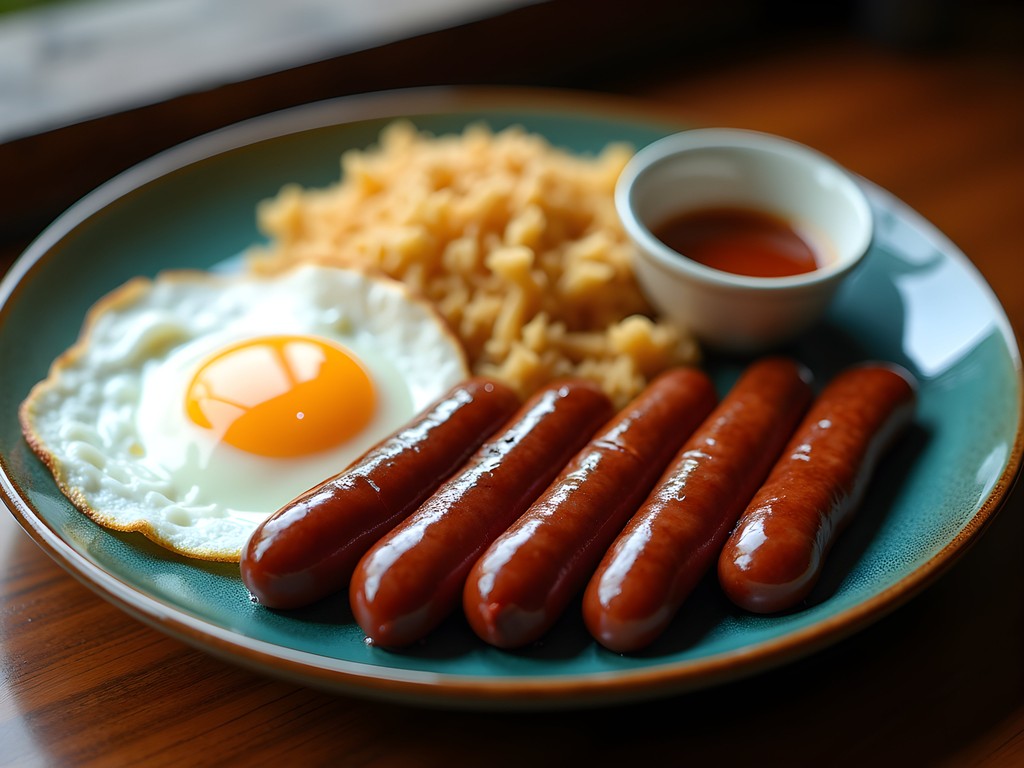
💡 Pro Tips
- For authentic bagnet, look for places where the skin makes a hollow sound when tapped with a knife
- Try longganisa for breakfast alongside sukang Iloco (local cane vinegar) for the full experience
- Visit the public market early morning to see locals selecting the freshest ingredients
Hidden Gem: The Vigan Public Market Experience
For families looking to understand a culture through food, I always recommend visiting local markets. Vigan's public market is a sensory education that children particularly enjoy—a symphony of colors, sounds, and unfamiliar ingredients that tell the story of this unique culinary crossroads.
Arriving at dawn (my favorite time for market visits worldwide), I found myself enchanted by vendors arranging pyramids of the region's tiny red onions and native garlic—both more pungent than varieties I've encountered elsewhere due to the mineral-rich soil of the Ilocos region.
The market's wet section showcases the day's catch from the South China Sea, including the tiny fish used in another local specialty, dinengdeng (vegetable stew with fermented fish sauce). For families with adventurous eaters, this is where you'll find ingredients for dishes rarely featured in tourist restaurants.
During my visit, an afternoon thunderstorm rolled in—a common occurrence in this tropical climate—sending shoppers scurrying under corrugated metal overhangs. I joined a group of elderly women sheltering near a kakanin (rice cake) vendor, who insisted I try her freshly made royal bibingka with salted egg topping. The contrast of sweet rice cake against the backdrop of dramatic weather created one of those perfect travel moments that engage all senses.
I recommend bringing a compact shopping tote for market purchases—perfect for collecting snacks or ingredients if you're staying in accommodations with kitchen access. My family's favorite market discovery was kalamay, a sticky sweet made from glutinous rice and coconut milk, packaged in distinctive coconut shells that double as sustainable containers.
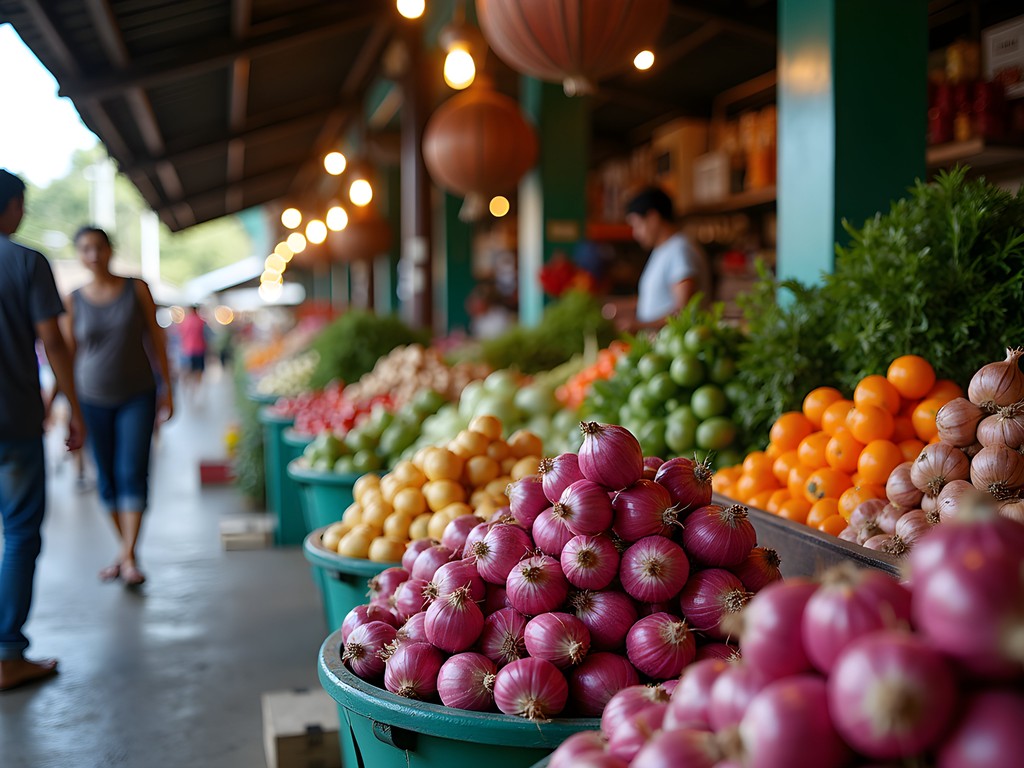
💡 Pro Tips
- Visit between 6-8am to see the market at its most vibrant
- Look for seasonal fruits like siniguelas (Spanish plums) and green mangoes with bagoong (shrimp paste)
- Bring small bills and coins for easier transactions
Family-Friendly Food Adventures: Cooking Classes & Heritage Restaurants
Traveling with family through Vigan's culinary landscape offers unique opportunities for hands-on learning. After years of organizing culinary events professionally, I've found that cooking classes offer the deepest connection to a destination's food culture—especially for children, who absorb cultural knowledge through tactile experiences.
At Kusina Felicitas, housed in a restored ancestral home, families can book cooking demonstrations that showcase the Spanish techniques that influenced local cuisine. I watched as children as young as eight learned to wrap meat in banana leaves for pipian (annatto-colored chicken) and pound rice flour for native kakanin desserts. The kid-sized apron set I brought for my friend's daughter proved perfect for these messy, memorable activities.
For dining experiences that combine history with gastronomy, Hidden Garden offers tables set among lush tropical plants, where traditional pinakbet (vegetable stew with shrimp paste) arrives in clay pots alongside modern interpretations of Spanish-Filipino classics. What makes their food especially interesting is how they adjust recipes seasonally—lighter preparations during the hot months, heartier versions during the cooler December-February period.
Don't miss Café Leona on Plaza Burgos, where you can sample pipian (chicken stewed in annatto and ground rice) while watching the evening promenade around the plaza. Named after Leona Florentino, a pioneering Filipina poet, the restaurant occupies her former home—a beautiful example of how food and cultural history intertwine in Vigan.
"La comida es memoria," my grandmother always said—food is memory. In Vigan, each bite creates new memories while honoring centuries of culinary evolution.

💡 Pro Tips
- Book cooking classes at least a day in advance, especially during peak tourist season
- Request child-friendly activities when booking if traveling with young ones
- Save room for traditional Vigan desserts like royal bibingka and leche flan
Sweet Endings: Vigan's Unique Desserts & Coffee Culture
The Spanish influence on Vigan's culinary landscape extends beautifully into its dessert traditions, where European techniques merge with tropical ingredients to create sweets that perfectly cap a day of exploration.
Royal bibingka—a rice cake topped with salted duck egg, cheese, and a sugary crust—exemplifies this fusion. Unlike the bibingka found elsewhere in the Philippines, Vigan's version has a distinctive buttery quality that reminds me of certain Catalan desserts from my childhood. The contrast between the sweet cake and salty toppings creates a balance that's particularly satisfying after a spice-heavy meal.
During the afternoon downpours common in this tropical climate, I developed a ritual of ducking into Café Uno for their signature hot chocolate and freshly fried churros. While the churros would be familiar to any Spanish visitor, the chocolate here has a thinner consistency than Spanish chocolate but incorporates local tablea (pure cacao tablets) for a distinctive earthy flavor.
For families with children, the interactive dessert experience at Irene's Vigan Empanada offers sweet versions of the famous empanada filled with sweetened banana or ube (purple yam). Watching my friend's children delight in these purple-filled pastries reminded me why food remains one of travel's greatest teachers.
To bring a taste of Vigan home, I recommend picking up traditional preserves like calamay (sticky rice dessert) or local balikutsa (hardened sugar candy with peanuts). The insulated food jar I always travel with proved perfect for transporting these heat-sensitive treats back to my accommodations without melting in the tropical heat.
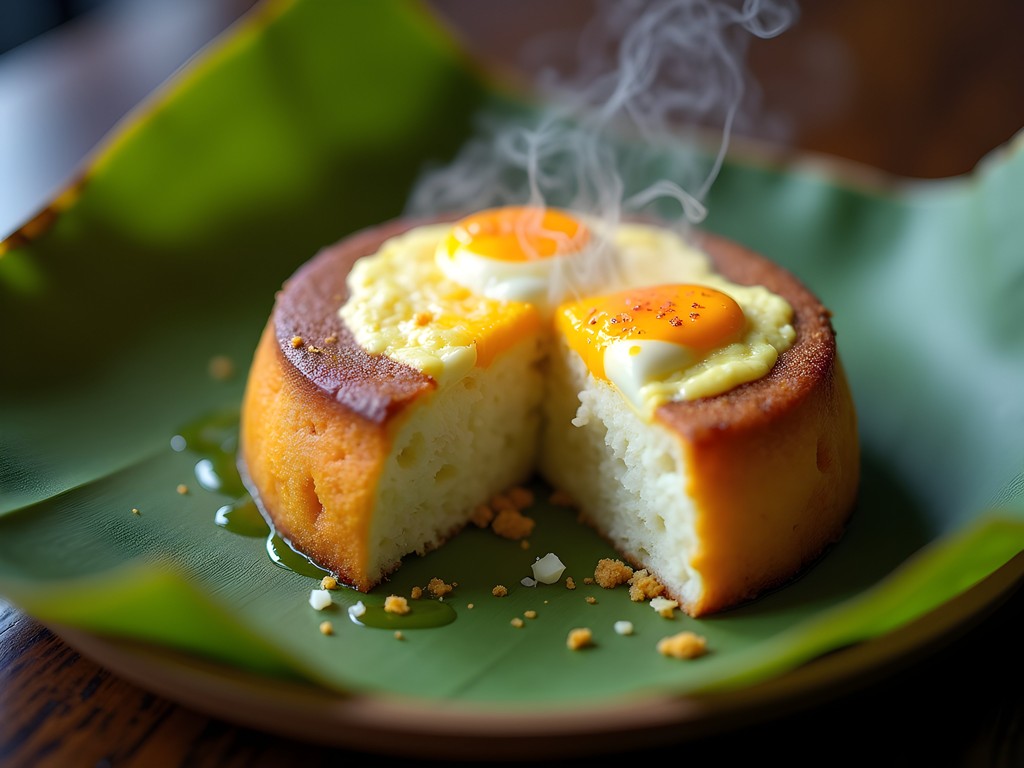
💡 Pro Tips
- Try bibingka in the late afternoon when it's freshly baked
- Visit Irene's Vigan Empanada for both savory and sweet varieties
- Look for local tablea chocolate as souvenirs—they make excellent gifts
Final Thoughts
As my weekend in Vigan drew to a close, I found myself sitting in Plaza Burgos just as the evening air cooled following an afternoon shower. The cobblestones glistened under streetlights while families gathered for the evening paseo, children chasing each other around the square with sticky fingers from just-purchased bibingka.
This culinary heritage trail through Vigan offers something increasingly rare in our homogenized world—a genuine fusion cuisine that evolved naturally over centuries rather than as a chef's experiment. The Spanish colonizers who arrived here nearly 500 years ago could never have imagined how their culinary traditions would marry with local ingredients and techniques to create something entirely new yet somehow familiar to both cultures.
For families seeking meaningful travel experiences, Vigan's food culture provides natural conversation starters about history, cultural exchange, and how environment shapes what we eat. As my abuela always said, "La comida es el idioma que todos entendemos"—food is the language everyone understands. In Vigan, that language tells a story of resilience, adaptation, and the beautiful alchemy that happens when cultures collide. Come hungry, leave inspired.
✨ Key Takeaways
- Vigan's cuisine represents an authentic fusion born from Spanish colonial influence and indigenous Filipino ingredients
- The best food experiences combine historical context with hands-on activities suitable for all family members
- Weather patterns and seasonal changes influence both traditional recipes and when to best enjoy certain dishes
- Market visits provide cultural insights beyond what restaurants can offer
📋 Practical Information
Best Time to Visit
year-round, though December-February offers cooler temperatures and festive atmosphere
Budget Estimate
$30-50 per day per person for food experiences
Recommended Duration
2-3 days
Difficulty Level
Beginner


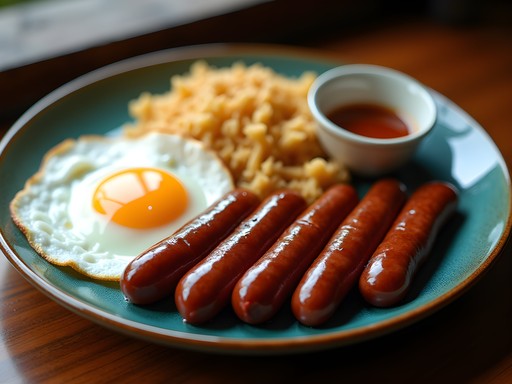
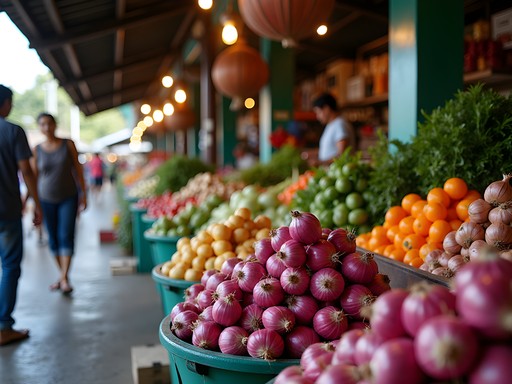
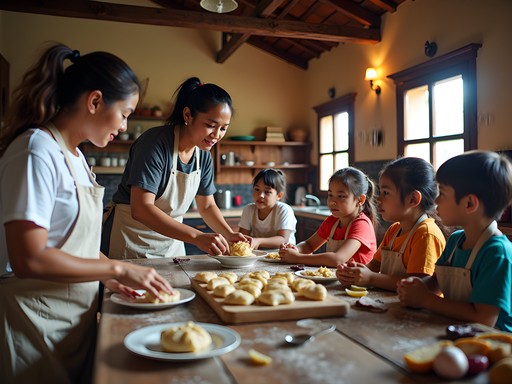
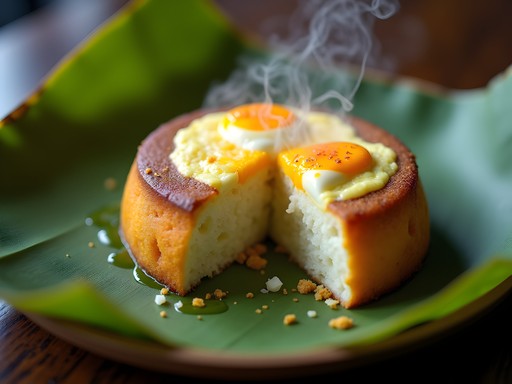






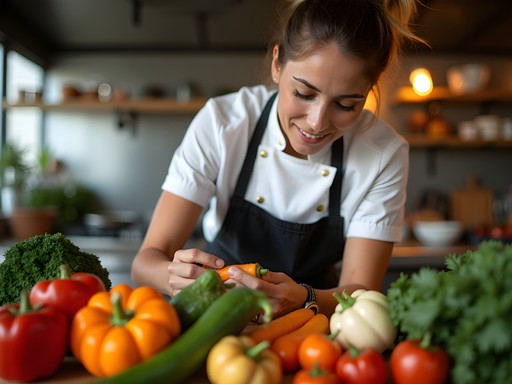

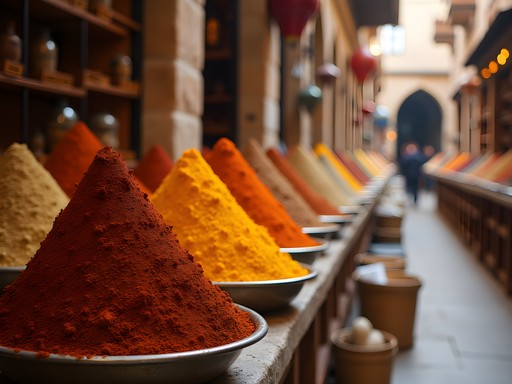
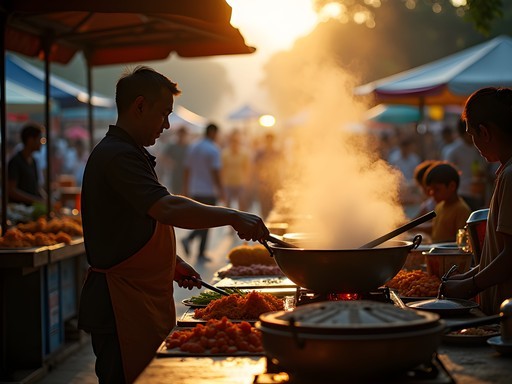
Comments
winterone
Great post! We're planning a trip to the Philippines next spring and want to include Vigan. How did you get there from Manila? Is it better to fly or take the bus? And how many days would you recommend staying to really experience the food scene?
Emma Sullivan
Hi winterone! I took an overnight bus from Manila which was surprisingly comfortable and affordable (about 8 hours). There are flights to Laoag then a 1.5-hour drive to Vigan, but I enjoyed seeing the countryside. I'd recommend at least 2-3 days in Vigan - one day for the historic district and Plaza Burgos food stalls, another for the market and cooking class, and maybe a third for exploring nearby beaches and food spots in the countryside. Hope that helps!
winterone
Thanks so much, Emma! That's super helpful. The overnight bus sounds like a good option. Can't wait to try the bagnet and longganisa combo!
photozone
Your photos are stunning! What camera did you use for those food shots? The colors of the dishes really pop!
Emma Sullivan
Thanks! Just my trusty phone camera actually - Google Pixel with some light editing. The natural lighting in Vigan is a photographer's dream!
Taylor Moreau
Emma, brilliant write-up! I visited Vigan last year during a business trip to Manila and made a weekend detour specifically for the food. The contrast between the Spanish colonial architecture and the distinctly Filipino flavors is fascinating. I'd highly recommend visitors try the 'hidden' empanada stalls at the back of the public market - they're less crowded than the famous spots but often made by the same families. Also, for those planning to explore beyond the historic district, I found that hiring a local guide for a half-day food tour was worth every peso. They took me to homes where families have been making traditional vinegars and bagoong for generations. I used this phrasebook which was incredibly helpful when chatting with the market vendors!
tripone
Thanks for the tip about the market empanadas! Did you try the longganisa too? I've heard it's amazing there.
Taylor Moreau
Absolutely! The Vigan longganisa is a must-try - garlicky and slightly sour compared to other Filipino versions. Best enjoyed for breakfast with sinangag (garlic rice) and a fresh egg. Perfect start to a day of exploring!
tripone
Wow! Those pictures of Calle Crisologo at dusk are absolutely stunning! Makes me want to book a trip right now!
winterone
Right? The way the light hits those cobblestone streets is magical!
tripone
Totally! Have you been to Vigan before?
winterone
Not yet but it's definitely on my list now, especially for that bagnet Emma mentioned!
mountainrider
Just got back from Vigan last week! Emma, your description of the morning mist on those cobblestone streets is spot on. We stayed at an old Spanish villa converted into a B&B and the owner made us traditional chocolate de batirol for breakfast - thick Spanish-style hot chocolate but with local cacao. The contrast between the crispy bagnet and the garlicky longganisa is what Vigan cuisine is all about - you get both Spanish preservation techniques and Filipino flavors in every bite. Don't miss trying pinakbet when you're there, everyone! The bitter melon gives it such a distinctive taste.
Amit Sullivan
Brilliant write-up, Emma! Your description of morning mist over those cobblestone streets took me right back to my visit in 2023. The Spanish-Filipino fusion in Vigan is truly something special - it's like tasting living history. For anyone planning a visit, I'd recommend booking one of those cooking classes Emma mentioned at least 2 days in advance. They fill up quickly! I learned to make proper bagnet there and have been disappointing my family with my attempts to recreate it ever since. 😂 Also, don't miss trying bibingka after dinner while walking along Calle Crisologo at night - the atmosphere with the old lamps lit up is magical. I used my travel journal to sketch some of the colonial buildings while enjoying these street treats.
triplegend
Thanks for the cooking class tip! Heading there next month and definitely want to learn how to make longganisa.
Amit Sullivan
You'll love it! Just be prepared - authentic Vigan longganisa is quite garlicky compared to other Filipino versions. Bring your appetite!
summerphotographer
Emma, your post brought back so many memories! I visited Vigan last year but didn't know about the cooking classes. Wish I had seen this before my trip! The public market was definitely a highlight though - I got some amazing photos of all the colorful produce and spices. The vendors were so friendly even though I was obviously a tourist with my camera. Did you try empanada? That was my absolute favorite snack while wandering around Calle Crisologo.
Amit Sullivan
The empanadas in Vigan are incredible, aren't they? So different from the Spanish version - much crunchier and that orange dough! I always tell people to try them with the local vinegar dip.
triplegend
Bagnet is seriously addictive! Had it three times during our trip last year.
summerphotographer
Same! I think I gained 5 pounds just from bagnet and longganisa breakfasts 😂
triplegend
Worth every pound though! Did you try the one at that corner place near Plaza Burgos?
summerphotographer
Yes! That's exactly where we went. The crispy skin was perfect!
moonseeker5527
This was my first time hearing about Vigan and now I'm obsessed! Had to Google so many of these dishes. The blend of Spanish and Filipino cuisines sounds incredible. I'm planning a Philippines trip next year and definitely adding this to my itinerary. Is it easy to get to from Manila? Also, are there any food tours you'd recommend for someone new to Filipino cuisine?
Gregory Boyd
It's about 8 hours by bus from Manila, but worth every minute! I'd recommend this guidebook which has a great section on Ilocos region food specialties. The night bus is actually quite comfortable if you book the first class option.
winternomad
I visited Vigan last year and the food was incredible! The bagnet was so crispy yet tender inside - nothing like regular lechon. We took a cooking class at one of the heritage houses where they taught us how to make proper Ilocano longganisa. The instructor explained how each family has their own secret recipe passed down through generations. The garlic content in Vigan longganisa is no joke! My hands smelled of garlic for days but it was totally worth it. Did anyone else notice how different their vinegar is too? That sukang iloko made from sugarcane has such a unique sweet-sour profile.
Kimberly Murphy
That sukang iloko is amazing! I brought two bottles home and I'm rationing it like liquid gold. Works brilliantly with seafood dishes too!
Venture X
Premium card with 2X miles, $300 travel credit, Priority Pass